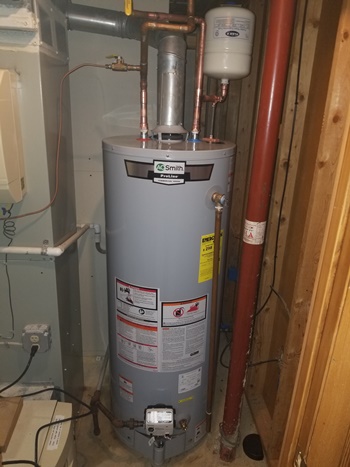Tips on How to Maintain Your Home's Hot Water System in Good Condition
Click HereWhat're your beliefs about What Kind of Maintenance Do Water Heaters Need??

Warm water is crucial for everyday comfort, whether it's for a rejuvenating shower or cleaning meals. To guarantee your hot water system runs efficiently and lasts much longer, routine maintenance is key. This article gives practical ideas and understandings on exactly how to maintain your home's warm water system to prevent disturbances and pricey fixings.
Intro
Preserving your home's warm water system could appear overwhelming, yet with a few straightforward actions, you can guarantee it runs smoothly for several years to come. This guide covers whatever from understanding your hot water system to DIY upkeep tips and understanding when to employ specialist help.
Importance of Maintaining Your Hot Water System
Routine upkeep not just prolongs the lifespan of your warm water system but additionally ensures it operates efficiently. Overlooking maintenance can result in reduced performance, greater power expenses, and even early failing of the system.
Indications Your Hot Water System Demands Upkeep
Recognizing when your warm water system needs focus can prevent major problems. Look out for indications such as irregular water temperature, strange noises from the heating unit, or rustic water.
Recognizing Your Warm Water System
Before diving right into upkeep jobs, it's helpful to recognize the standard components of your warm water system. Normally, this consists of the water heater itself, pipes, anode poles, and temperature level controls.
Regular Monthly Maintenance Tasks
Regular monthly checks can help catch minor problems before they rise.
Flushing the Water Heater
Purging your water heater removes sediment build-up, enhancing efficiency and prolonging its life.
Checking and Changing Anode Rods
Anode rods stop corrosion inside the storage tank. Inspecting and replacing them when worn out is crucial.
Checking and Changing Temperature Setups
Changing the temperature settings makes sure optimal performance and safety.
Do It Yourself Tips for Upkeep
You can execute a number of maintenance jobs on your own to maintain your warm water system in leading problem.
Looking for Leaks
Regularly examine pipes and links for leakages, as these can result in water damages and higher costs.
Testing Stress Relief Valves
Checking the pressure relief valve ensures it operates correctly and avoids extreme pressure build-up.
Insulating Pipes
Protecting warm water pipes lowers heat loss and can save power.
When to Call a Professional
While do it yourself upkeep is beneficial, some issues require specialist know-how.
Facility Problems Needing Expert Help
Examples include significant leaks, electric troubles, or if your water heater is regularly underperforming.
Regular Specialist Upkeep Perks
Specialist maintenance can include detailed inspections, tune-ups, and guaranteeing compliance with safety requirements.
Conclusion
Regular maintenance of your home's hot water system is essential for performance, long life, and cost savings. By complying with these pointers and recognizing when to look for professional assistance, you can guarantee a trustworthy supply of hot water without unanticipated interruptions.
How to Maintain an Instant Hot Water Heater
Before tinkering with your hot water heater, make sure that it’s not powered on. You also have to turn off the main circuit breaker and shut off the main gas line to prevent accidents. Also turn off the water valves connected to your unit to prevent water from flowing into and out of the appliance. 2. When you’re done, you have to detach the purge valves’ caps. These look like the letter “T†and are situated on either side of the water valves. Doing so will release any pressure that has accumulated inside the valves while at the same time avoid hot water from shooting out and burning your skin. 3. When the purge valves’ caps are removed, you have to connect your hosing lines to the valves. Your unit should have come with three hoses but if it didn’t, you can purchase these things from any hardware or home repair shops. You can also get them from retail stores that sell water heating systems. Read the user’s manual and follow it to complete this task properly. When the hosing lines are connected, open the purge port’s valves. 4. You should never use harsh chemical cleaners or solutions when cleaning your unit. Make use of white vinegar instead. It should be undiluted and you’ll probably use about 2 gallons. 5. Now flush your water heater. This task should probably take about 40 minutes. We can’t give you specific directions for this because the procedure is carried out depending on the type, model and brand of your heater. With that being said, refer to the user’s manual. 6. When you’re done draining the unit, you have to turn off the purge port valves again. Remove the hosing lines that you earlier installed on each of the water valves. Put the valve caps (purge port) back in their respective places and be very careful so as not to damage the rubber discs that are found inside these caps. 7. Now that everything’s back in place, check your user’s manual again to find out how to reactivate your water heating system. 8. Once it is working, turn one of your hot water faucets on just to let air pass through the heater’s water supply pipes. Leave the tap on until water flows smoothly out of it. https://www.orrplumbing.com/blog/2014/september/how-to-maintain-an-instant-hot-water-heater/

I came across that entry about What Kind of Maintenance Do Water Heaters Need? when doing a search on the web. Are you aware of somebody else who is interested in How to Maintain a Hot Water Heater in a Few Simple Steps? Why not share it. Kudos for being here. Come back soon.
View More